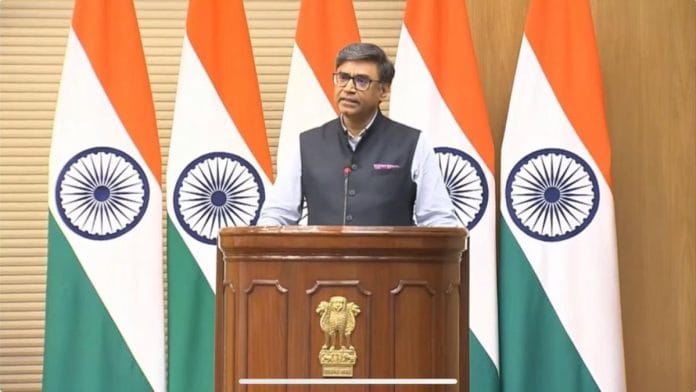For a generation unfamiliar with conflict, the killing of tourists in Pahalgam and India’s retaliatory strike on Pakistan came as a rude awakening. The visuals from the India-Pakistan confrontation were real—not set in Afghanistan or Vietnam or popular video games such as World of Tanks Blitz or World of Warships. The sheer number of questions curious young minds asked me about the conflict made me reflect—was I this aware during the 1999 Kargil War, knowing beyond what was reported in newspapers and on TV channels? Despite my experience, one question perplexed me: When will the conflict end?
Truth Social helped answer it. American President Trump stated on the platform on 10 May that India and Pakistan had agreed to “a full and immediate ceasefire”. This was followed by a press briefing by Indian Foreign Secretary Vikram Misri, who confirmed the news, stating “that both sides would stop all firing and military action on land and in the air and sea with effect from 1700 hours Indian Standard Time.”
Pat came the next question—Has the conflict ended?
In my conversation at home, I could only repeat what the government had said: “The Director Generals of Military Operations would talk again on the 12th of May at 1200 hours”, which might achieve a conclusive end to the conflict. However, Foreign Secretary Misri soon briefed the media again, noting that ceasefire violations had occurred within hours of the agreement between India and Pakistan, constituting “provocation and escalation.” This may be the most complex scenario for a non-military apparatus to fathom. But it was no surprise for Indian security forces, who knew very well that Islamabad and the General Headquarters in Rawalpindi were still seeking victory.
Why India-Pakistan ceasefires fail
Since the Partition, the Pakistani deep state has not won any war against India, which is why occasions such as this are seen as a chance to ‘try again’.
What India has never been able to look past is the Pakistani establishment’s zero-sum mindset – rooted in decades of political posturing and military doctrine – which undermines even the sincerest peace efforts. New Delhi also understands that ceasefires, though symbolically important, have historically failed to address the underlying national psyche of a neighbour that equates temporary escalation with long-term leverage – making peace fragile and trust elusive.
In the long history of ceasefires, failure has been a constant. Ceasefires often fail due to a complex interplay of political incentives, military leadership, domestic pressures, and historical grievances. For a ceasefire and peace effort to truly succeed, Pakistan’s structural setting as a country must evolve beyond what exists.
Although failure defines ceasefires with Pakistan, and global pressure has done little to dismantle the country’s terror infrastructure, India is beginning to acknowledge the limits of relying on international coalitions against cross-border terrorism. These alliances, while symbolically powerful, often falter in action—especially because there is a very fine line between ‘state’ and ‘non-state’ actors.
Also read:
India’s shifting response
The ongoing conflict between India and Pakistan reflects a shift in India’s overall strategy against the menace of terrorism—aimed at countering a country that uses non-state entities to carry out proxy wars against India.
First, on the doctrinal front, India seems to no longer differentiate between state institutions and non-state actors. It sees them as one unit posing a threat – be it individuals driven by revenge or those who finance, shelter, support, or mastermind their actions. Consequently, India’s recent invocation of the ‘right to response’ is not only asserted with conviction at home but has found support globally.
Second, peace messengers from the Indian side, who have, for the longest time, backed initiatives such as Aman Ki Asha, perhaps have a conclusive understanding by now that treating ‘thou neighbour’ for its natural character is key to the country’s safety, and expecting them to change may be the most elusive hope. This definitive understanding helps channelise India’s energies toward the right goals, especially as it sets some definitive targets for itself domestically and globally. To ensure that India’s rise is peaceful and does not seek to disrupt the global order, it must first build deterrence that it has not been able to in the past decades.
Third, India may now view failed ceasefires—broken mainly due to non-compliance by the other party—as validation of its scepticism and hardened stance. These failures have generated intense pessimism about whether diplomatic words such as ‘definitive’, ‘meaningful’, and ‘conclusive’ are valued anymore by the other party. Delhi may want to abandon them from its strategic dictionary altogether, because they warrant ‘military deterrence’ as the first and most solid safeguard.
Coming back to questions, only time, and people’s own understanding, can tell what a ceasefire truly means. Is it merely the silence of guns, or the beginning of a deeper, difficult conversation? Is it a pause to heal, or a prelude to the recurrence of a bigger conflict, such as a full-scale war? Perhaps, in its most hopeful sense, it is a fragile handshake between histories burdened by mistrust.
Rishi Gupta is a commentator on global affairs. Views are personal.
(Edited by Zoya Bhatti)






